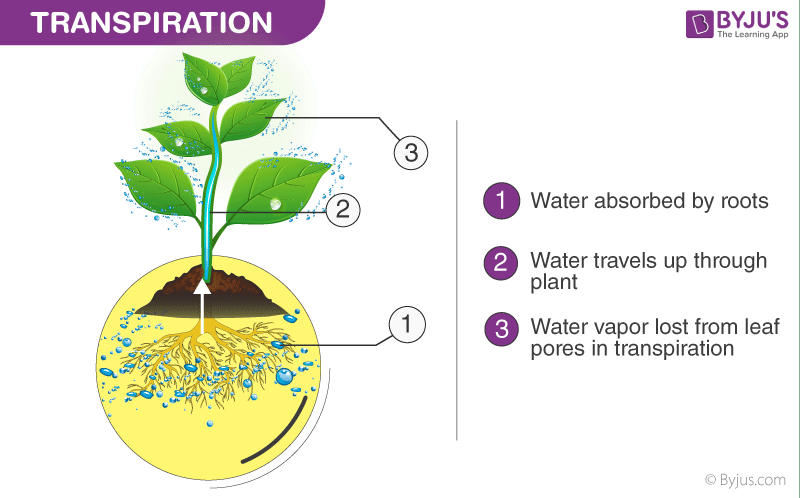What is Transpiration?
The evaporative water loss seen in plants is termed transpiration. Plants use less than one per cent of water for growth and photosynthesis. The remaining water is lost through the stomata. This loss of water is known as transpiration. There are several external as well as internal factors that affect this transpiration process.
External Factors – Light, temperature, humidity, wind, etc.
Internal Factors – Distribution of stomata, water status of the plant, etc.
The transpiration mechanism keeps the plant cool, and also facilitates the plant to absorb more nutrients.

Types of Transpiration
- Stomatal transpiration
- Cuticular transpiration
- Lenticular transpiration
Extended Reading: Transpiration in Plants
Difference between Stomatal, Lenticular and Cuticular transpiration
Stomata Transpiration |
Lenticular Transpiration |
Cuticular Transpiration |
|
The water loss happens through the stomata. |
The evaporation of water happens through the lenticels (porous opening on the woody plants). |
The water loss is through the cuticles or external membrane. |
|
The maximum water loss through transpiration happens here. |
Less than one per cent of the water loss happens this way. |
Ten per cent water or less than that is lost through this transpiration. |
Frequently Asked Questions
How does transpiration differ from photosynthesis?
What is transpirational pull?
Transpirational pull happens due to the evaporation of water from the cell surface. A pulling force created inside the xylem tissue helps in the upward movement of water in the xylem vessels. It is nothing but a suction force that draws water upwards.
What is guttation?
It is a process by which water droplets are secreted in some vascular plants. When the evaporation is low, excessive water is collected near the grass blades and vein openings in the form of droplets. This type of water loss is termed guttation. Here, the water is lost in its liquid phase.
Why does stomatal transpiration occur during the day?
Stomata are pores that help in gaseous exchange. Thus, they also aid in the photosynthesis process that happens during the daytime. During the daytime, the optimum temperature and light open up the stomata. Normally, stomata are closed during the night. Thus, stomata transpiration also occurs on the day.
Visit BYJU’S Biology for more exciting topics.
Comments